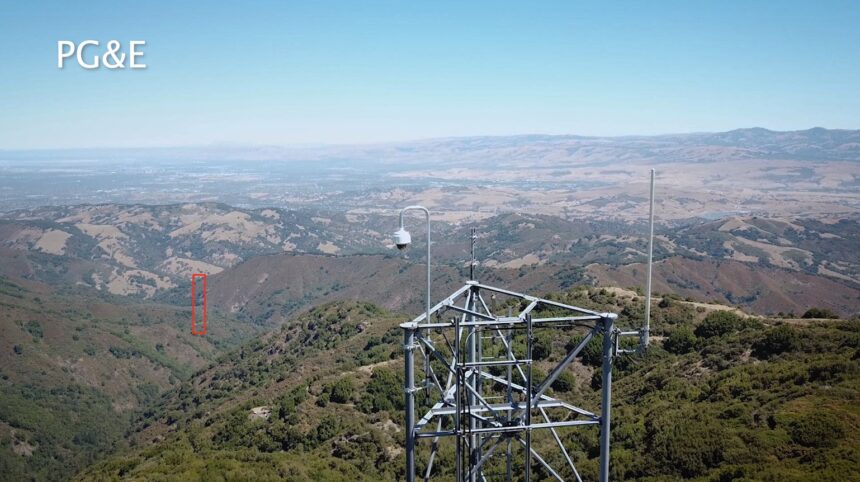High-definition cameras helping PG&E and fire departments predict, respond to extreme wildfire danger

SAN LUIS OBISPO, Calif. -- An expanding network of high-definition cameras spread out across California is assisting PG&E and various fire agencies predict and respond to extreme wildfire danger.
"PG&E's most important responsibility is the safety of our customers and communities and installing these high-definition cameras throughout our service territory is just one step and one additional tool in our toolbelt to ensure the safety of our customers," said Mark Mesesan, PG&E Marketing and Communications Representative.
The cameras are part of the ALERTWildfire camera network, a system created by the University of California, San Diego, the University of Nevada, Reno and the University of Oregon.
"They are high-definition, pan, tilt, zoom cameras, with near infrared capabilities that allows firefighters, first responders, and companies such as PG&E, to confirm and monitor wildfires," said Mesesan. "They give us visibility in high fire-threat areas. In most cases, from a bird's eye view because they're located on mountaintops and other high locations. That allows us to see great distances."
The cameras are monitored at the Wildfire Safety Operations Center in San Francisco by a team of analysts that include fire experts and meteorologists.
"Our staff at our 24/7 wildfire safety operations center, they use the cameras to better monitor wildfire risks and coordinate prevention and response efforts," said Mesesan. "The data is shared publicly with agencies such as CAL FIRE. If we see something from the cameras, typically the agencies are going to see them at the same time. They are constantly sharing information to ensure they know what we're seeing and if they haven't' seen it, we're going to let them know and they're going to respond and they can actually take control of the cameras if they desire."
Fire agencies say the cameras have become an integral tool in their effort to fight wildfires, which have become more frequent and destructive over the past few years.
"Fire seasons are getting longer," said Captain Daniel Bertucelli, Santa Barbara County Fire Department Public Information Officer. "The fires that we're getting during our fire seasons are larger and more destructive. They're burning faster and more intensively. "Any tool that we can add to our toolbox to help us prepare for these fires, as well as combat these fires, is a huge benefit and these cameras play a significant role in that because it gives us an eye in the sky really quick. We can get a good visual on these fires before our air attack aircraft can even get on scene."
According to Mesesan, PG&E has more than 250 cameras now installed in California, including about two dozen on the Central Coast.
"We are just thrilled that we have been able to add more than a dozen cameras to Santa Barbara County, particularly looking east of Tepusquet Peak and looking into the Santa Ynez Valley, just since the last day in July, add of these have been added in the last few months," said Mesesan.
Mesesan added there will be more than 600 cameras statewide by 2022, which will provide PG&E visibility to 90% of its service territory that is located in high-fire territory.
